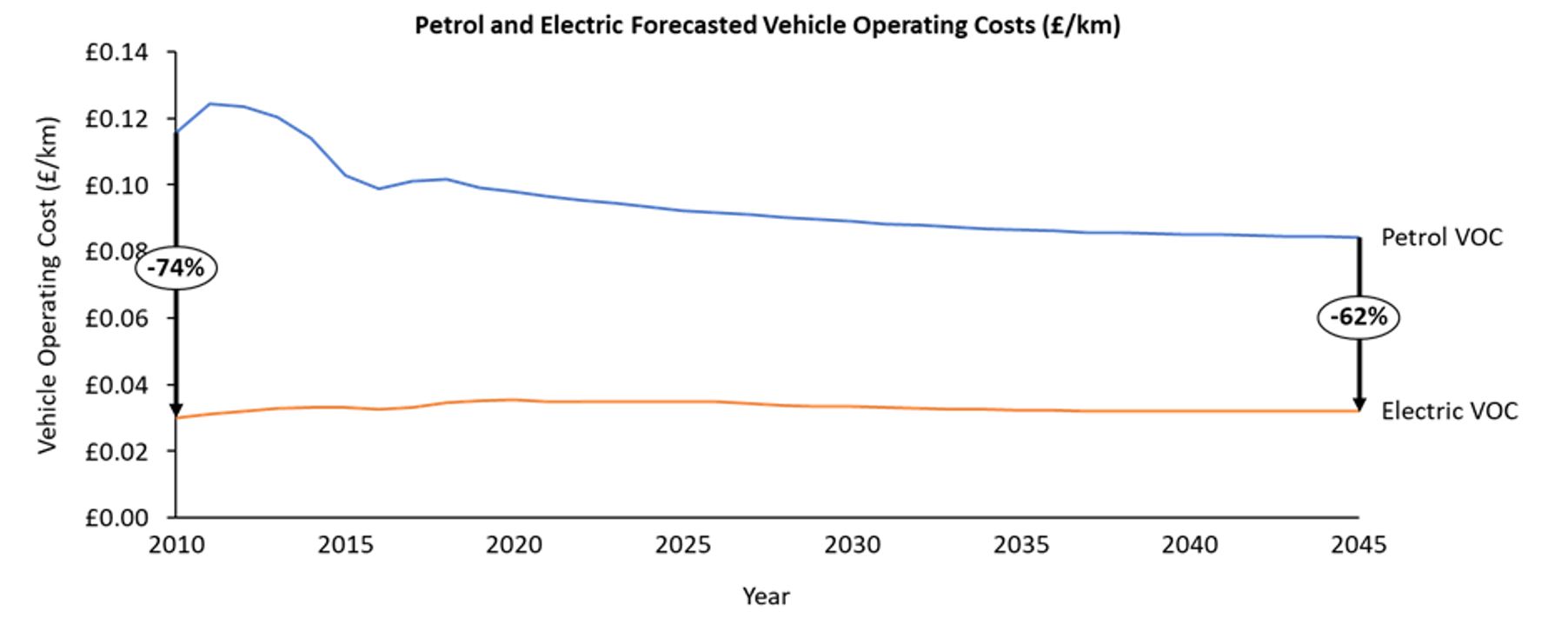How will the adoption of electric vehicles drive future demand?
Posted 11/12/2020 by Edward Blake

The ban on the sale of conventionally-fuelled vehicles in the UK from 2030, provides an opportunity for electric vehicle (EV) sales to accelerate and achieve a substantial market share of road-based transportation in the near future. With this point in the future appearing to creep increasingly closer.
Many barriers currently remain when it comes to EV adoption, such as range anxiety, an established network of charging points or whether the national grid can support a substantial increase in charging demand. Alongside these required infrastructure improvements lies the biggest barrier: human behaviour. Adopting this new technology would mean a change in the way we approach private travel, because of the operational differences between EVs and petrol/diesel vehicles. This provides challenges, given we are so accustomed to the way in which combustion engine vehicles operate, as they form the foundation of so many global economies.
However, there is generally a recognised need to decarbonise transport and government policy commitments are quickly becoming more stringent and ambitious. This means we will soon be adopting an alternative to the combustion engine for personal travel and, right now, electric vehicles appear to be the most viable alternative.
Despite a relatively large upfront cost for the initial purchase of an electric vehicle, their vastly reduced operating costs are the reason that some of the population have already made the transition to EV. The chart below displays the typical forecasted expected difference in vehicle operating costs between petrol and electric vehicles. This overall cost primarily consists of the cost of the fuel that powers both types of vehicle i.e. petrol/diesel or electricity used to charge the vehicle’s battery.

Many studies, such as the one undertaken by RAND, on behalf of the UK’s Department for Transport, have previously investigated the elasticity between traffic demand and fuel price (or the fuel cost element of operating a vehicle). The RAND study gathers evidence from a number of studies undertaken globally and concludes that a typical elasticity of demand to fuel price or cost can range from -0.1 to -0.5. Meaning that as fuel costs reduce by 10%, traffic demand will increase by between 1% to 5%. If we are to expect a large increase in the proportion of electric vehicles on the roads, which brings with it a large decrease in fuel operating costs, these studies suggest there will be a corresponding large increase in traffic demand. For example, if electric vehicles are approximately 70% cheaper to run, the studies suggest that every person who switches from petrol to electric will use their vehicle between 7% and 35% more than before. As the landscape of private vehicle travel dramatically shifts towards electric vehicles in the near future, it could result in significant levels of traffic growth as a direct result of cheaper fuel costs. It is also worth noting that this growth would be on top of any traffic growth that might occur as a result of the usual population/employment/economic growth we expect to see.
It might seem nonsensical to suggest that just because it is cheaper to use a car, we will all use our cars more. Generally, we tend to travel with a purpose in mind, and just because it is marginally cheaper to travel to work, this does not mean we will travel to work more often. However, in the long run, significantly cheaper fuel costs, such as those offered by EVs, might encourage a redistribution of population and employment, as travel costs for living further away from the workplace may be within acceptable ranges. Whilst people may not necessarily make more trips, or more frequently, they would be travelling further and longer.
A number of factors therefore need to be explored when forecasting traffic in a low emission and low operating cost environment:
- With people living further away from their workplace, this brings greater challenges when trying to encourage more environmentally friendly methods of travel e.g. walking, cycling and public transport.
- With people travelling further/longer and more vehicle-kms being generated, larger portions of the highway network’s capacity will be used and should be planned for.
- With people travelling further/longer and more vehicle-kms being generated, there is a greater likelihood of road traffic accidents to occur.
- Whilst the studies described above might still provide applicable elasticities, following the transition to significant EV usage, it is likely that there will be a limit to this effect as fuel costs approach zero. This limit should be explored, or an effect built into any models which may use these elasticities, to cater for any shocks to the change in cost.
- Traffic forecasting models should contain suitable functionality to allow for the redistribution of population and employment as a result of cheaper vehicle operating costs.
In conclusion, government policies aimed at helping the environment could have some inadvertent, unanticipated side effects, such as increased congestion and accidents, or a reduction in walking/cycling. These unexpected consequences should be considered when forecasting the change in future travel. Considerations of these potential diversions from ‘business as usual’ traffic forecasts, are generally not accounted for in a typical traffic forecast. At Infrata we are happy to question traffic forecasts, to consider a range of future scenarios, appreciating that the future is not always a continuation of the past and forecasting assumptions should reflect this.